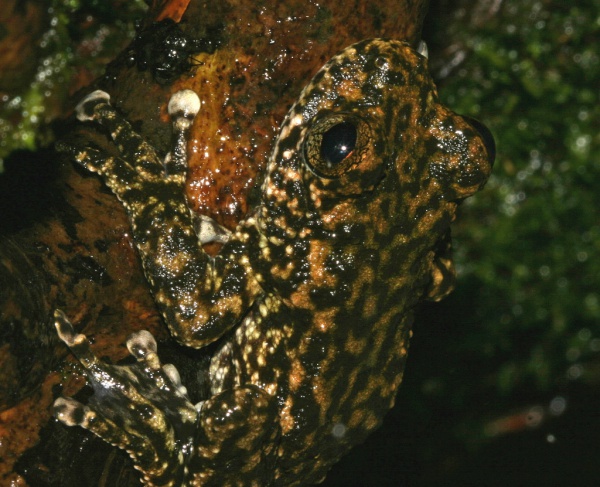Facts About Waterfall frog
The Australian waterfall frog, also known as the torrent treefrog, is a captivating species of tree frog indigenous to Far North Queensland, Australia. These frogs typically inhabit moist, rocky streams, often residing near waterfalls. They are relatively large compared to other tree frogs, reaching up to 5.5 cm in length. Their dorsal sides feature a mottled pattern that provides effective camouflage against granite rocks, while their ventral sides display vibrant hues of orange, green, and pink.
One of the most distinctive features of the waterfall frog is its enlarged toe pads, which facilitate adherence to rocks amidst fast-moving water. Males also exhibit prominent nuptial pads on their thumbs during the breeding season. Unlike some other frog species, such as the stony creek frog, the waterfall frog lacks vocal sacs. This absence may be because the noise of running water would likely mask their calls.
These frogs thrive in stream habitats within tropical North Queensland, ranging from Paluma to Cooktown and the Mt. Carbine uplands. They are found at elevations between 180 to 3,000 meters. Sadly, they have experienced significant population declines in high-altitude areas, probably due to the fungal disease chytridiomycosis. Nonetheless, they appear to be faring better in lowland regions.
The Australian waterfall frog is classified as Endangered on both the IUCN Red List and under Queensland's Nature Conservation Act 1992. This designation underscores the critical need for conservation efforts to protect this unique amphibian.
